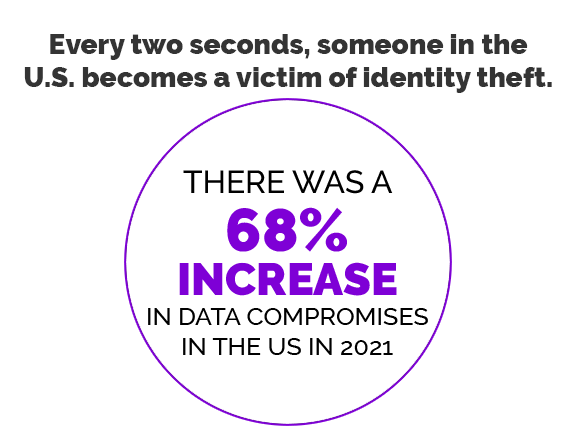In 2019, the Internal Revenue Service received nearly 156 million tax returns. Then came the COVID-19 pandemic.
In 2022, the number of 1040s filed hit 169.7 million. 2021 saw 169.1 million returns sent to the IRS, and 2022 saw 164.3 returns sent.
During 2020-2022, the IRS most likely increased advance Child Tax Credit amounts in response to the Coronavirus, which caused spikes in tax filing. Most of those who still needed to file before 2020 did not have to do so by law. But they could only get the COVID benefits was to filing something. It’s important to remember that, despite pandemic payments. You may be entitled to other tax benefits if you file a return, but you cannot receive them otherwise.
These ten situations might allow you to get a refund.
1. Withheld taxes were too high for you. You are entitled to a refund if more withholding is needed. Most of us have income tax deducted from our paychecks regularly. Other sources of income also sometimes take some tax amounts off the top.
But the IRS doesn’t automatically send this money out to the over-withheld taxpayers. The only way to get any prepaid tax money back is to file a tax return to collect your refund.
2. You made estimated tax payments. These extra tax payments, usually four a year, are made on earnings that aren’t subject to withholding. Estimated taxes are the self-employed version of paycheck withholding but also are used to cover income from investment earnings or sales that produce capital gains sales. You want to make sure the IRS knows that you made estimated payments. And you want to file if you overpaid them. As with excess withholding, the only way to get your extra estimated amount back is via a refund when you file a return.
Then there are tax credits. This type of tax break reduces any tax you owe dollar-for-dollar. A refund of some of these items is possible. As that descriptor indicates, any excess distinction after your tax bill is erased comes back to you as a refund.
3. You’re eligible for the Earned Income Tax Credit. The EITC is a tax credit available to lower-income workers. Tax credits are also refundable. The maximum EITC amounts, determined by your family size, for 2022 filings are as follows —
- $6,935 for taxpayers filing jointly who have three or more qualifying children,
- $6,164 with two qualifying children,
- $3,733 with one qualifying child and
- $560 if you didn’t have any qualifying children in 2022.
4. You qualify for the Additional Child Tax Credit. Despite COVID’s expiration, the Additional Child Tax Credit (ACTC) still exists for families with more significant needs. While the $2,000 Child Tax Credit can only zero out your tax bill, the ACTC could get qualifying filers up to $1,500 per child as a refund.
5. You qualify for the American Opportunity tax credit. Depending on your educational background, you may be eligible for a $2,500 tax credit. Some qualifying filers can even reclaim up to $1,000 of the American Opportunity tax credit.
6. You qualify for the Affordable Care Act’s Premium Tax Credit. You no longer have to pay a tax penalty if you don’t have health insurance. There are still many who call the Affordable Care Act (ACA) medical coverage they get through health care marketplaces Obamacare. Many insurance buyers can afford their policies thanks to this tax break.
In most cases, the Premium Tax Credit (PTC) is made in advance to help pay the premiums. After receiving the PTC, claim it immediately. If you don’t use that option, you may receive a refund for the tips you delivered.
Finally, there are other circumstances where filing a tax return is a good idea, even if you don’t have to.
7. You got 1099 forms. You get many 1099 tax statements showing how much money you got from sources that don’t issue W-2s. In addition, different types of 1099s are given depending on the level of earnings.
Self-employed individuals get 1099-NECs for their nonemployee work if the payments exceed $600. It’s all taxable if you receive unemployment benefits. An employee who loses their job will receive a 1099-G form. The 1099-DIV, 1099-INT, or 1099-B documents show how much their portfolios or sales paid them during the year.
Even if all this money doesn’t add up to enough to require you to file, you should anyway. Why?
The money you made may have required you to file self-employment taxes (SE). There is a $400 threshold that triggers SE tax payment.
Secondly, the IRS receives copies of 1099s when they are issued. Those curious agents may want to know what income they heard about. It may lead to more inquiries from the IRS examiner regarding other earnings not reported to third parties.
It notes on page 5 of Publication 501 about the 1099-B that “filing a return may prevent you from getting a notice from the IRS.” Therefore, I should file!
8. You want to establish a placeholder for tax carryforwards. Non-used deductions and credits can be carried over to the following year.
Sue – let’s call her Sue in this example – had a terrible 2022 and lost money. Additionally, Sue was eligible to deduct her home office expenses. However, since she didn’t make a profit, she can’t use the home office write-off.
Sue can, however, carry the unused home office deduction into this year, when she expects (fingers and toes crossed) to make more self-employment money. But she must file for the initial claim to claim that carryforward amount in a better-paying year.
9. You must file a state return. There is some form of income tax collected in most states. The state returns most of those jurisdictions use are based on the federal tax filings of the residents. The federal version may be helpful to meet state tax obligations in such places. It may even get you a state refund.
10. You want to be in the system for future automatic benefits. Taxpayers, the IRS, and those not required to file returns had a lot of headaches distributing COVID pandemic benefits. Adding new laws, including automatic money transfers, to the IRS’ workload wasn’t the first time. Are you familiar with the tax rebates that George W. Bush issued?
There will be more times like this in the future. In the end, the IRS is likely to distribute temporary government relief. As we learned from the coronavirus payments, the only way to get that money is already in the IRS system. The easiest way to get there is to file a tax return.
If any of these circumstances apply to you, sending Uncle Sam a tax return is a good idea.
You’ll need to work hard on it. Tax professionals can also help, including with Free files and software at no cost.
You should get a refund if you file your taxes and get a refund for it.












Recent Comments